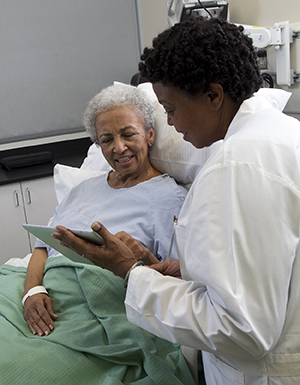Before Arthroscopy
The healthcare staff will guide you on how to prepare for arthroscopy. They may ask for the results of any recent exams or special tests. You will be told how to get ready at home for surgery. A healthcare provider will talk with you about the type of anesthesia to be used. Let your provider know if you have any allergies or previous reactions to anesthesia. You will also learn whether you may go home the same day as surgery. Or should plan to spend the night at the hospital.
Getting ready
-
Complete any tests that your surgeon orders before surgery.
-
Follow any directions you are given for not eating or drinking before surgery.
-
Ask your healthcare provider if you should take your regular medicines before surgery.
-
Stop taking nonsteroidal anti-inflammatory drugs (NSAIDs), such as aspirin or ibuprofen, 7 to 10 days before surgery. Or as directed by your provider.
-
If you smoke, now is a good time to stop. Quitting can reduce the risk for problems from the surgery. This includes an infection. You may need several weeks of not smoking to get the full benefit.
-
Arrange for an adult friend or family member to give you a ride home after surgery.
Planning for anesthesia
Before surgery, you will be told about the type of medicine that will keep you free of pain during arthroscopy. General anesthesia allows you to comfortably sleep through surgery. Regional and local anesthesia numb the involved part of your body. You may also be given a medicine that will help you relax.

Possible risks
-
Excess bleeding or swelling
-
Blood clots
-
Infection
-
Harm to nerves and blood vessels
-
A shift to open surgery (calls for a larger cut)
-
Anesthesia problems. The anesthesiologist will discuss any risks with you before surgery.
© 2000-2025 The StayWell Company, LLC. All rights reserved. This information is not intended as a substitute for professional medical care. Always follow your healthcare professional's instructions.